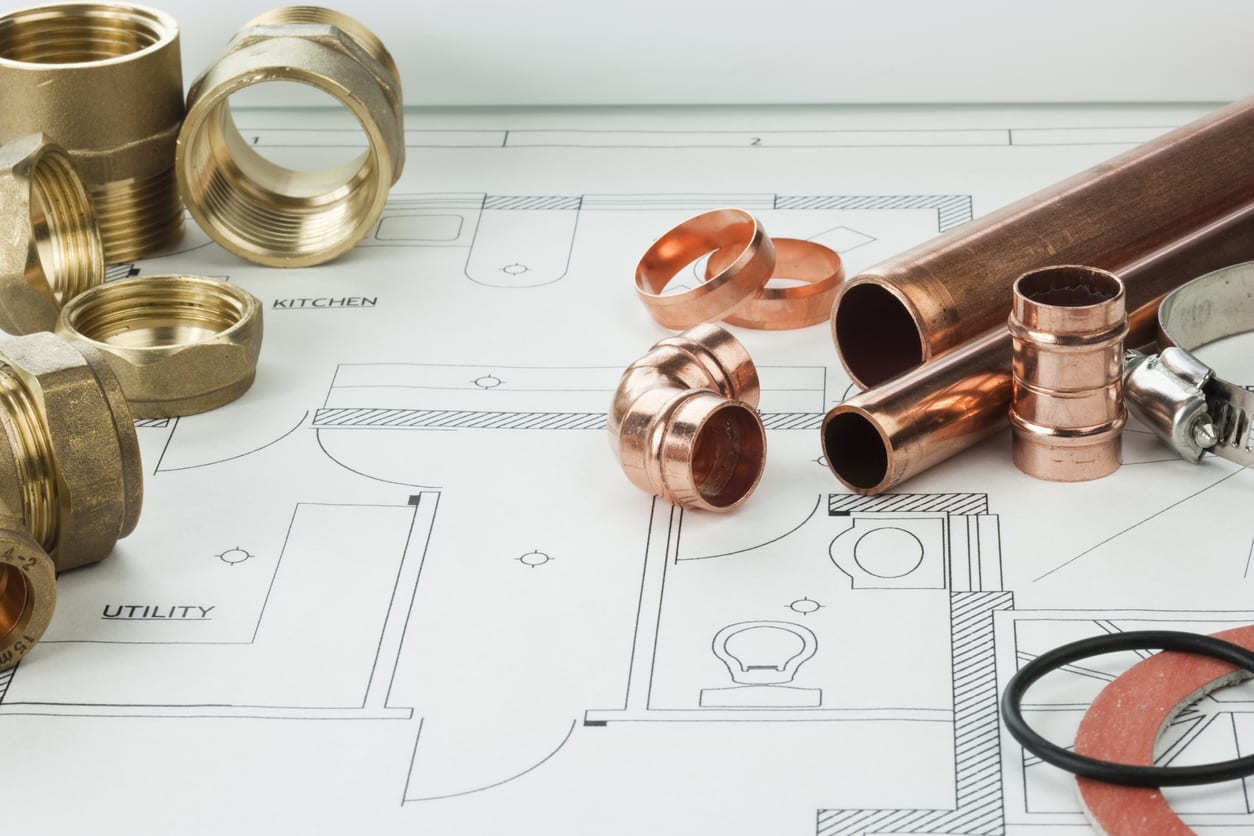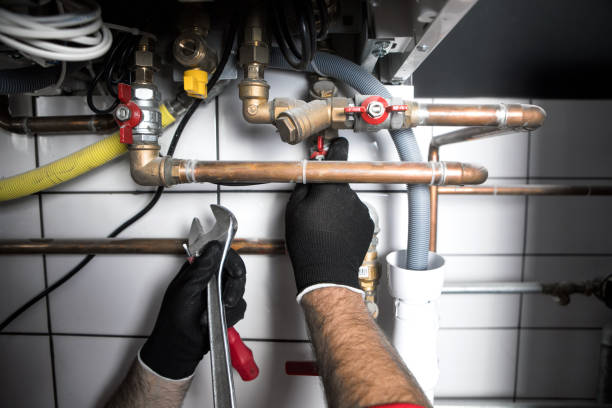Just how do you really feel in relation to Exploring Your Homes Plumbing Anatomy?

Comprehending exactly how your home's pipes system works is necessary for every homeowner. From supplying tidy water for alcohol consumption, cooking, and bathing to securely eliminating wastewater, a well-kept pipes system is vital for your family's health and comfort. In this extensive overview, we'll discover the complex network that makes up your home's plumbing and deal ideas on maintenance, upgrades, and dealing with usual concerns.
Intro
Your home's plumbing system is greater than simply a network of pipes; it's a complicated system that ensures you have access to tidy water and effective wastewater elimination. Knowing its elements and how they interact can aid you protect against expensive repairs and make sure whatever runs smoothly.
Basic Components of a Pipes System
Pipes and Tubing
At the heart of your pipes system are the pipes and tubes that carry water throughout your home. These can be made of different materials such as copper, PVC, or PEX, each with its advantages in regards to sturdiness and cost-effectiveness.
Components: Sinks, Toilets, Showers, etc.
Components like sinks, commodes, showers, and tubs are where water is used in your home. Comprehending just how these fixtures connect to the plumbing system assists in diagnosing troubles and planning upgrades.
Valves and Shut-off Factors
Shutoffs regulate the flow of water in your plumbing system. Shut-off shutoffs are crucial during emergencies or when you need to make repair services, permitting you to separate parts of the system without disrupting water circulation to the entire home.
Supply Of Water System
Main Water Line
The main water line connects your home to the community water supply or a private well. It's where water enters your home and is distributed to different components.
Water Meter and Stress Regulatory Authority
The water meter procedures your water use, while a pressure regulator guarantees that water streams at a safe pressure throughout your home's plumbing system, protecting against damages to pipelines and components.
Cold Water vs. Warm water Lines
Recognizing the difference in between cold water lines, which supply water directly from the primary, and hot water lines, which carry heated water from the water heater, helps in repairing and planning for upgrades.
Drain System
Drain Pipeline and Traps
Drain pipes carry wastewater far from sinks, showers, and commodes to the sewage system or septic system. Catches stop drain gases from entering your home and also catch debris that can create clogs.
Air flow Pipelines
Ventilation pipelines permit air into the drain system, protecting against suction that could slow down drainage and trigger catches to empty. Proper ventilation is crucial for keeping the integrity of your plumbing system.
Importance of Correct Drain
Making sure appropriate drain avoids backups and water damage. Frequently cleaning drains pipes and keeping catches can avoid expensive repair work and extend the life of your plumbing system.
Water Heating System
Types of Hot Water Heater
Hot water heater can be tankless or standard tank-style. Tankless heaters warmth water as needed, while storage tanks keep heated water for prompt use.
Just How Water Heaters Link to the Plumbing System
Understanding just how water heaters link to both the cold water supply and hot water circulation lines aids in identifying concerns like inadequate hot water or leakages.
Maintenance Tips for Water Heaters
On a regular basis flushing your water heater to get rid of sediment, examining the temperature setups, and examining for leaks can expand its life expectancy and improve power effectiveness.
Usual Plumbing Issues
Leakages and Their Causes
Leaks can occur as a result of aging pipelines, loose installations, or high water stress. Dealing with leakages immediately avoids water damages and mold development.
Clogs and Clogs
Blockages in drains pipes and bathrooms are frequently triggered by flushing non-flushable products or a buildup of oil and hair. Utilizing drainpipe screens and bearing in mind what goes down your drains pipes can avoid blockages.
Signs of Pipes Problems to Expect
Low water stress, slow drains pipes, foul odors, or unusually high water costs are signs of prospective pipes issues that must be addressed quickly.
Pipes Maintenance Tips
Regular Assessments and Checks
Schedule yearly plumbing evaluations to capture issues early. Try to find indicators of leaks, rust, or mineral build-up in faucets and showerheads.
Do It Yourself Upkeep Tasks
Easy jobs like cleaning faucet aerators, looking for toilet leaks utilizing color tablet computers, or insulating subjected pipes in cool climates can protect against significant plumbing problems.
When to Call a Specialist Plumber
Know when a pipes concern calls for professional expertise. Attempting intricate repair work without correct knowledge can result in more damages and higher repair work expenses.
Updating Your Pipes System
Reasons for Upgrading
Updating to water-efficient components or changing old pipes can improve water high quality, lower water expenses, and boost the worth of your home.
Modern Pipes Technologies and Their Benefits
Explore technologies like clever leakage detectors, water-saving commodes, and energy-efficient water heaters that can save cash and lower ecological effect.
Cost Considerations and ROI
Calculate the in advance prices versus long-lasting savings when considering pipes upgrades. Lots of upgrades pay for themselves via decreased utility expenses and fewer fixings.
Environmental Effect and Preservation
Water-Saving Components and Devices
Mounting low-flow faucets, showerheads, and bathrooms can substantially decrease water usage without sacrificing efficiency.
Tips for Lowering Water Use
Straightforward behaviors like dealing with leakages quickly, taking much shorter showers, and running complete tons of washing and meals can save water and lower your energy expenses.
Eco-Friendly Plumbing Options
Take into consideration sustainable pipes materials like bamboo for floor covering, which is durable and eco-friendly, or recycled glass for kitchen counters.
Emergency Readiness
Steps to Take During a Pipes Emergency
Know where your shut-off valves lie and just how to shut off the water supply in case of a burst pipeline or major leakage.
Importance of Having Emergency Situation Contacts Handy
Keep call information for regional plumbing technicians or emergency situation services conveniently available for quick feedback throughout a plumbing situation.
DIY Emergency Situation Fixes (When Relevant).
Short-term solutions like making use of duct tape to patch a dripping pipeline or placing a pail under a dripping faucet can lessen damages until a professional plumber shows up.
Conclusion.
Comprehending the composition of your home's pipes system empowers you to preserve it successfully, conserving money and time on repairs. By complying with normal upkeep routines and remaining informed about contemporary plumbing innovations, you can ensure your pipes system runs successfully for years ahead.
HOW YOUR PLUMBING SYSTEM WORKS
Which Pipes Do What?
Blue lines = fresh water supply entering the building
Red lines = hot water supply entering the building
Grey lines = pipes carrying waste away from the building and venting pipes carrying gases away from the building (through the roof)
YOUR MAIN PLUMBING SYSTEMS
There are two main plumbing systems that support your home s basic plumbing needs one that brings clean water into your home, and one that sends dirty water away from your home. Connected to the toilet, bath, shower, and other faucets in your home, these two systems keep your water flowing in the right directions.
ACCESSING FRESH WATER
Fresh and clean water is brought into your home through the main water supply line . Filtered through one pipe, this water is pressured to flow into the various fixtures in your home at any given time.
This water can be sourced from a well located on your property, a pond or river (mostly cottages), or, as in most cases, from the city s municipal water treatment centre. However, it is important to note that water that is untreated, such as the water siphoned from ponds or rivers, may not be safe to drink. Personal water supplies always need to be treated for hardness and contaminants before consumed.
MUNICIPAL WATER SUPPLIES
Improve taste and odour
Remove sediment
Eliminate hardness
Reduce chlorine
COLD WATER SUPPLY VS. HOT WATER SUPPLY
Cold water flows into your home or building through the service line, which then distributes hot or cold water to your fixtures. This line is most commonly run through a central column that runs floor to floor. Hot water runs in short and straight pipes as the longer the pipeline, the more heat that will be lost in the transfer. Having shorter pipes also allows residents to access hot water more quickly.
WASTE WATER SYSTEM
Your wastewater system is divided into two parts pipes that send wastewater away from your home and venting pipes that send sewer gas away from your home. Sewage water travels through pipes that flush the water and waste towards local sewers that are operated and managed by your city or town. Most sewer systems rely on gravity to move the wastewater to where it needs to go.
The further away from your toilet or sink, the larger wastewater pipes become. This allows for waste to be disposed of from various parts of your home or business at once without pipe blockages. The angle and flow of these pipes are also essential for keeping your waste pipes clear of build up.
https://harrisplumbing.ca/how-your-home-plumbing-system-works/

HOW YOUR PLUMBING SYSTEM WORKS
Which Pipes Do What?
YOUR MAIN PLUMBING SYSTEMS
There are two main plumbing systems that support your home s basic plumbing needs one that brings clean water into your home, and one that sends dirty water away from your home. Connected to the toilet, bath, shower, and other faucets in your home, these two systems keep your water flowing in the right directions.
ACCESSING FRESH WATER
Fresh and clean water is brought into your home through the main water supply line . Filtered through one pipe, this water is pressured to flow into the various fixtures in your home at any given time.
This water can be sourced from a well located on your property, a pond or river (mostly cottages), or, as in most cases, from the city s municipal water treatment centre. However, it is important to note that water that is untreated, such as the water siphoned from ponds or rivers, may not be safe to drink. Personal water supplies always need to be treated for hardness and contaminants before consumed.
MUNICIPAL WATER SUPPLIES
COLD WATER SUPPLY VS. HOT WATER SUPPLY
Cold water flows into your home or building through the service line, which then distributes hot or cold water to your fixtures. This line is most commonly run through a central column that runs floor to floor. Hot water runs in short and straight pipes as the longer the pipeline, the more heat that will be lost in the transfer. Having shorter pipes also allows residents to access hot water more quickly.
WASTE WATER SYSTEM
Your wastewater system is divided into two parts pipes that send wastewater away from your home and venting pipes that send sewer gas away from your home. Sewage water travels through pipes that flush the water and waste towards local sewers that are operated and managed by your city or town. Most sewer systems rely on gravity to move the wastewater to where it needs to go.
The further away from your toilet or sink, the larger wastewater pipes become. This allows for waste to be disposed of from various parts of your home or business at once without pipe blockages. The angle and flow of these pipes are also essential for keeping your waste pipes clear of build up.
https://harrisplumbing.ca/how-your-home-plumbing-system-works/
I ran across that piece about when perusing the internet. Are you aware of another individual who is involved in the topic? Be sure promote it. I value reading our article about .
Click Here